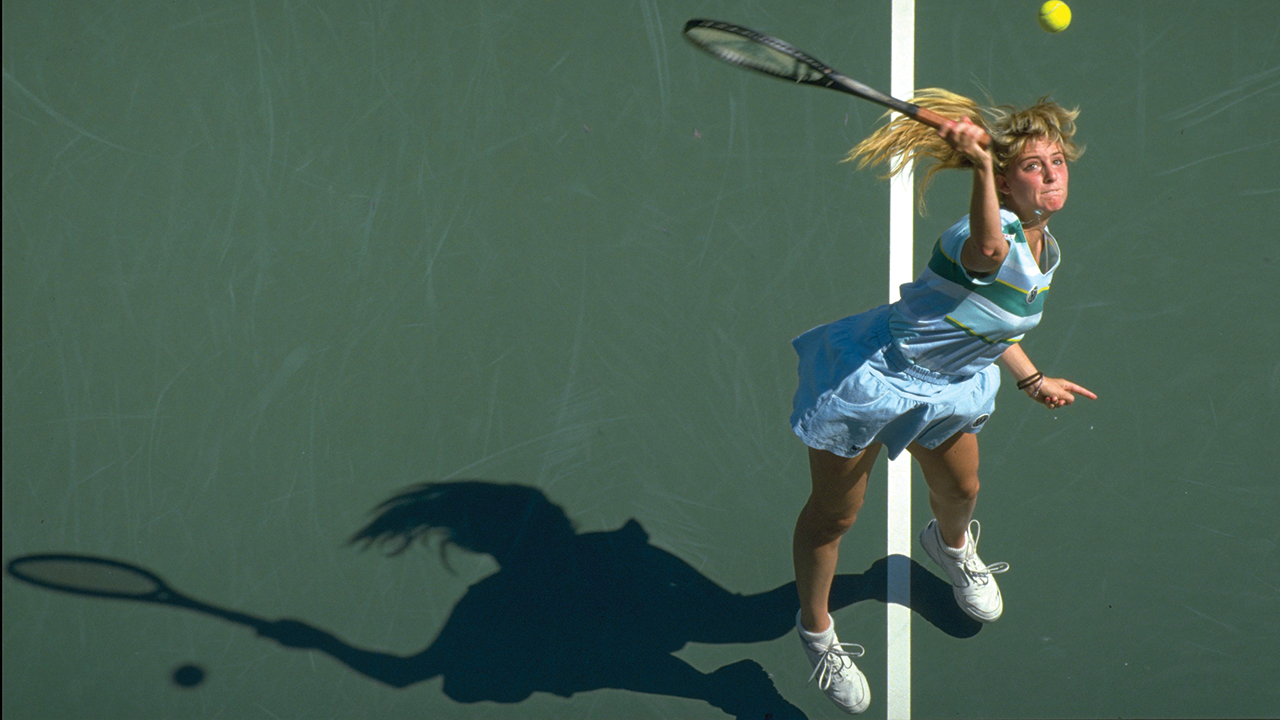Long before Eugenie Bouchard, there was Carling Bassett—Canada’s first tennis “darling”
Being young, fit, tanned and blond helped make Carling Bassett (now Bassett-Seguso) Canada’s original tennis darling more than 30 years before the Summer of Genie. In fact, that was her nickname: Darling Carling. When she pushed Chris Evert-Lloyd to a third-set tiebreaker in the final at Amelia Island in 1983 as a 16-year-old, it was front-page news. Bassett got a telegram from feather-haired Wayne Gretzky wishing her luck. Fan mail came addressed to “Carling Bassett, tennis player.”
She loved all of it. The favoured daughter of Toronto media and sports icon John F. Bassett and one of tennis guru Nick Bollettieri’s first proteges, she was a national champion at age 13. She starred in a movie. She had a modelling contract. “I was always used to being in the public eye,” she says from Florida, where the 46-year-old mother of five lives with her husband, former Tour pro Robert Seguso. “My dad was in the public eye. We always entertained. All that was easy. I never minded doing press, and Canadians were always there for me, even through my bad times.”
It all seemed perfect. And trying to keep it that way nearly killed her.
She got sick, got married, had a baby and saw her father—a giant in her life and in her tennis career—die of cancer, all before she turned 19. Nearly the entire time Bassett-Seguso should have been in her prime she was bulimic, often throwing up 20 times a day. It started when her modelling agency suggested she could be just a bit thinner—“It was the worst thing you could say to a teenage girl”—and came to a head months after having her first child, Holden, when she had what she thought was a heart attack and rushed to an emergency room. The incident finally prompted her to share her secret with those who loved her. “If that hadn’t happened, I don’t think I’d be on this phone right now,” she says.
In recent years, the sport that made her famous has faded into the background, but then this country and the tennis world at large started falling for another young Canadian woman with groundstrokes that can potentially tear an unwitting opponent’s arm off at the shoulder. Eugenie Bouchard’s rise had her at No. 7 in the world prior to the Rogers Cup in her hometown of Montreal, surpassing the No. 8 rank Bassett-Seguso achieved when she made it to the semifinals of the U.S. Open in the summer of 1985.
As unanimous as the praise for Bouchard has been, she may earn no greater compliment than that she’s inspired Bassett-Seguso to watch tennis again. Watching Bouchard brings back a lot of memories. “I see the similarities,” she says. “I would never give up. She plays great from behind. She wins a lot of 40–15 games.”
They’ve never met, which is kind of amazing. If the day comes, Bassett-Seguso’s message to Bouchard will be simple: “Whatever you’re doing, keep doing it.”
But… don’t try to do too much. “She’s such a beautiful young woman. She’s going to be thrown into all of that, too,” says Bassett-Seguso. “She’s going to have to have a good sense of balance.”
Will being young, fit, tanned and blond be anything but a boon to Bouchard? Maria Sharapova, Bouchard’s childhood idol, was all of those things when she won Wimbledon at 17 in 2004. She’s routinely earned more than $20 million a year off the court ever since as one of sport’s true celebrities, and that’s where Bassett-Seguso was headed before life intervened. That’s also where she believes Bouchard is headed now. “Her path has been well-executed,” she says, “which shows she’s got really great people around her.”
The newest member of Genie’s Army didn’t miss a moment of Bouchard’s final three matches at Wimbledon, where she became the first Canadian woman to advance to a Grand Slam final. “I’ve had this huge tennis relapse,” Bassett-Seguso says. “Now I’m paying very close attention. I was blown away … I thought, ‘This girl can really play.’”
This story originally appeared in Sportsnet magazine. Subscribe here.

